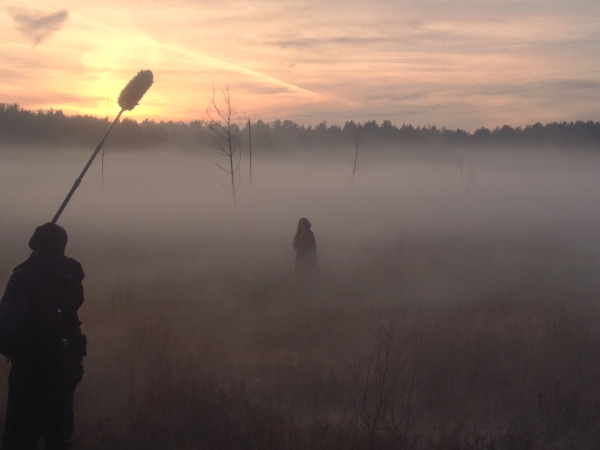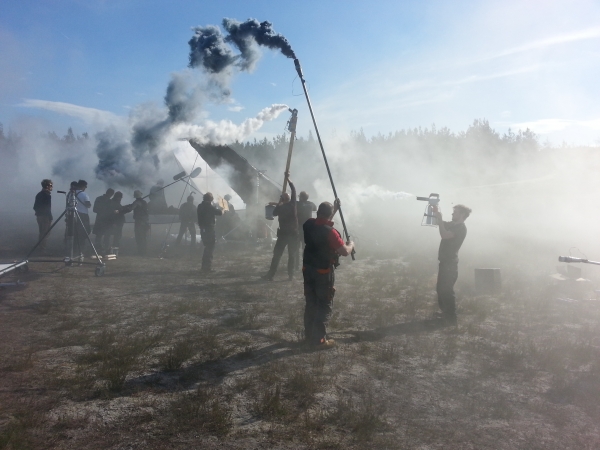Insider P.O.V: Special effects supervisor Mike Kelt on making Macbeth
Mike Kelt of Artem was the special effects supervisor for Macbeth and speaks exclusively about the challenges of making the Shakespeare film.
Macbeth was filmed entirely on location over 7 weeks in challenging winter conditions. Director Justin Kurzel had wanted to shot solely on location to bring "a reality and a sense of the landscape being connected to the words and the performance".
Michael Fassbender and Marion Cotillard star in director Kurzel's first UK feature, released on Friday 2nd October 2015.
What was your original brief for the special effects in Macbeth?
Mike Kelt: Artem was asked to provide all the physical floor effects and the prosthetics for the cast. Shot entirely on location, the physical floor effects included wind, rain, fog and fire etc. The prosthetics ranged from minor skin wounds and broken noses to more elaborate prosthetics such as disembowelling and even a full body corpse of one of the main characters. Justin Kurzel, the director, wanted the film to have a realistic, gritty, cold feel, so the atmospherics were very important.
 Can you give us an example of the level of work involved in one of the more complicated special effects in the film?
Can you give us an example of the level of work involved in one of the more complicated special effects in the film?
We had two major fire sequences on location, a pyre of burning bodies (shot on Skye) and a family burnt at the stake (amongst the sea grass at Bamburgh beach). The latter sequence was on SSSI (Sites of Special Scientific Interest) designated ground, which meant extra precautions were required. For example, only sea water could be used to put out the fire.
The whole area was covered in long, dry grass, so the first challenge was not setting fire to any of it. The platform was built only from logs and, though it looked great, to have the control we needed, meant plumbing the entire structure with gas and using fireproof dummies instead of people.
Another factor was protecting the cast, as they were all around the action area and the wind could be unpredictable. In every fire scene utmost control is crucial; you need to be able to turn one part up and another down whilst balancing the visual look, then being able to turn it all off instantly, when needed.
The sequence was allowed to run on much longer than thought possible, with the SFX team adapting their techniques while being covered in smoke and the occasional burning ember.
The majority of the filming schedule was exteriors on location in winter, how challenging was that element for the effects team and how did you overcome it?
Virtually all the filming was done on location, whether exterior or interior. The weather was extreme on many occasions, which helped the look of the film but was often difficult for the cast and crew to work in. There was one day in Scotland where the freezing rain and sleet was horizontal and the ground was boggy. I stepped in a seemingly shallow puddle in the moss but then disappeared up to my thigh in water - I don’t think I’ve ever moved so quickly. Luckily I was wearing yachting wet weather gear and got out just before the water got in.
The SFX team huddled like Antarctic penguins, with one person taking the brunt of the cold wind on their back while the rest lined up in front for protection, then every now and again people would change round. The location was quite a hike away from the road and no vehicles were allowed due to the sensitive nature of the landscape, so everything had to be manually carried up the hill. All in all, that was a pretty miserable day, but such is the glamour of film making.
 How closely were you working with the cast members on this film?
How closely were you working with the cast members on this film?
Almost all film SFX require close cooperation with the cast, whether they are being blown up or hacked to pieces! Most of the prosthetics used in Macbeth required life casts, which then had to be fitted on set. The opinion of the actor is crucial so they feel the piece is helping their performance rather than hindering it.
David Thewlis, who plays Duncan, got the added benefit of his replica dummy being so realistic that he was allowed to go home early rather than having to play dead all night. And fitting blood rigs to actors, up trouser legs and so on, certainly meant you needed to get close!
Which effect in Macbeth are you proudest of and why?
The biggest challenge was always going to be the consistent and persistent mist. Huge areas of hillside had to be covered; whole armies had to march into the mist and disappear. It had to go on all day, whatever the weather or wind could throw at us. As you can’t alter the wind – although some individuals seemed to think it should be possible – we had to have a system that could adapt and cope with such sudden changes.
There was no point having huge unwieldy smoke machines so we developed a fairly complicated hillside-wide plumbing system with inflatable tubes. This delivered smoke where we wanted it and could be easily be picked up and moved at a moment’s notice.
Watch the trailer
Macbeth was released on October 2nd 2015.
For more information on Artem, visit http://www.artem.com/